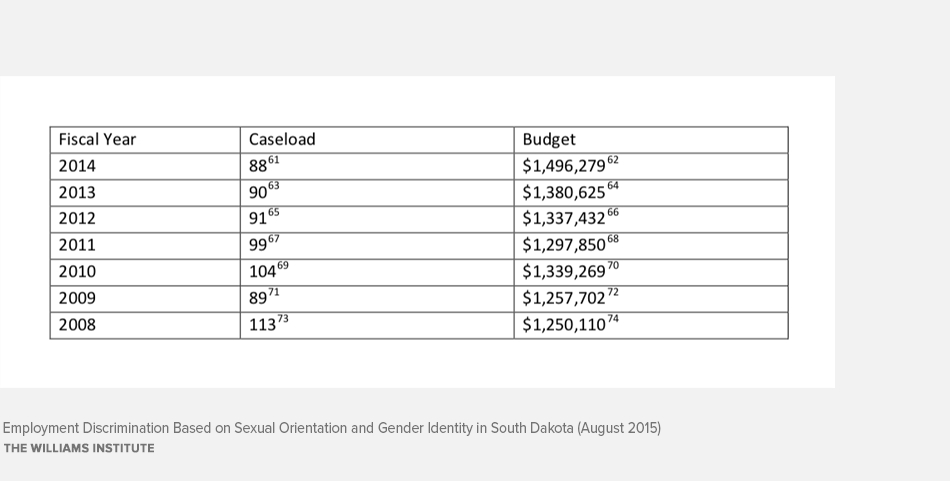South Dakota Human Relations Act
The South Dakota Human Relations Act prohibits employers from discriminating based on race, religion, sex, ancestry, disability, and national origin. The Act does not prohibit discrimination based on sexual orientation or gender identity. The non-discrimination requirements apply to both public and private sector employers. The law does not prohibit religious organizations for making employment decisions based on religion.
The South Dakota State Commission of Human Rights, under the Division of Human Rights in the Department of Labor and Regulation, is responsible for administrative enforcement of the Human Relations Act. The Commission has the power to investigate complaints, and attempt to remedy any violations of the law through informal measures, such as conferences and conciliations. The Commission may also award remedies when discrimination is found, including hiring, reinstatement, and back pay. An employee must file an administrative complaint with the Commission within 180 days of the alleged discriminatory practice. The Human Relations Act also allows an employee who has experienced discrimination to file a civil action in court after he or she has exhausted administrative remedies. A court may award the same remedies that are available through the Commission as well as compensatory damages.
Local-Level Protections from Discrimination
No localities in South Dakota have passed ordinances prohibiting discrimination on the basis of sexual orientation or gender identity in private sector employment. However, four localities have adopted ordinances or personnel policies that prohibit discrimination in local government employment based on sexual orientation: Minnehaha County, Shannon County, Brookings, and Sioux Falls. Shannon County’s personnel policy also prohibits discrimination based on gender identity.
Private Company and University Non-Discrimination Policies
Private companies adopt internal policies prohibiting discrimination based on sexual orientation and gender identity for a variety of reasons including improving recruitment and retention of talented employees, increasing employee productivity and customer satisfaction, and attracting a larger customer base. One study of corporate motivations behind adopting workplace non-discrimination policies found that 53% of the top companies in the U.S. with LGBT-supportive policies had adopted the policies for economic reasons.
Academic research has found that LGBT-supportive corporate policies are linked to positive business- related outcomes, including greater job commitment, improved workplace relationships, increased job satisfaction, and improved health outcomes among LGBT employees. For example, a 2006 national poll found that 89% of LGBT respondents and 72% of non-LGBT respondents reported that when deciding where to work, it was important that an employer have a written non-discrimination policy that includes race, ethnicity, sex, religion, age, sexual orientation and disability. Research also suggests that employers limit their available talent pool by screening out applicants based on their sexual orientation. One study found that the rate of screening out gay male applicants was twice as high in regions without sexual orientation non-discrimination laws.

